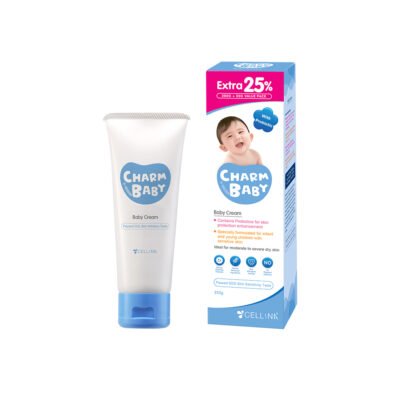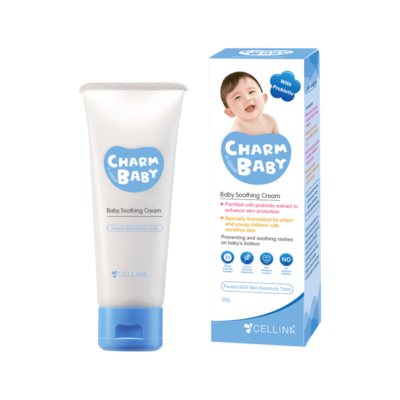This health article has been professionally reviewed by RPh Lee Kern Yeung, a registered pharmacist of Malaysian Pharmacists’ Society (MPS).
Children have thinner epidermis and more permeable barriers compared to adults, making them more susceptible to irritation and allergic reactions [1]. Additionally, children tend to be more susceptible to certain chemical sensitivities and adverse effects. Carefully selecting products based on their ingredients helps minimize these risks and supports the overall well-being of your children.
Beneficial Ingredients For Healthy Skin
Moisturizing emollients have been recommended for eczema skin in children to reduce the severity of condition and decrease medication use. To date, there is no standard guideline or dosage on choosing emollient ingredients, however do consider these beneficial ingredients recommended for eczema skin when selecting skincare products for your child [2,3]:
- Oat Extract
- Benefits: Oat extract is renowned for its soothing and anti-inflammatory properties. It can help calm irritated skin and provide relief from itching.
- Usage: Suitable for sensitive and eczema-prone skin. Look for topical oat protein rich in amino acids to strengthen skin barrier against irritants [2].
- Shea Butter
- Benefits: : It acts like a deep moisturizer because it contains essential fatty acids and vitamins which are crucial for repairing broken skin barriers. It is excellent for dry or flaky skin [3].
- Usage: Great for use in body lotions and creams to provide long-lasting hydration.
- Glycerin
- Benefits: As a powerful humectant, glycerin strengthens skin barrier by replenishing the skin’s natural moisture reservoir.
- Usage: Found in many moisturizers and body washes, it’s beneficial for maintaining skin hydration.
- Hyaluronic Acid
- Benefits: Hyaluronic acid retains moisture and plumps the skin. It’s suitable for maintaining skin hydration without being too heavy.
- Usage: Effective in serums and moisturizers, particularly for maintaining moisture balance.
- Petrolatum
- Benefits: Petrolatum forms a protective barrier on the skin, preventing moisture loss and protecting against irritants.
- Usage: Commonly used in ointments and barrier creams, particularly for very dry or sensitive areas.
- Vitamin E
- Benefits: An antioxidant that helps protect the skin from environmental damage and supports skin repair.
- Usage: Often included in lotions and creams to enhance skin health and reduce inflammation.
Ingredients to Avoid
While some ingredients are beneficial, others can be harmful to children’s sensitive skin. Here’s a list of ingredients you should avoid:
- Artificial Coloring
- Reason to Avoid: Artificial dyes can cause allergic reactions and skin sensitivities. They add color to products but offer no skincare benefits.
- Alternative: Products that are free of synthetic colors and dyes.
- Artificial Fragrances
- Reason to Avoid: Fragrances can cause allergic reactions and irritation. They are often added to products for a pleasant scent but offer no skincare benefit [4].
- Alternative: Fragrance-free or hypoallergenic products to minimize the risk of irritation.
- Parabens
- Reason to Avoid: Parabens are preservatives used to extend product shelf life but have been linked to potential hormonal disruptions.
- Alternative: Paraben-free labels to avoid unnecessary exposure.
- MI Preservative
- Reason to Avoid: Methylisothiazolinone (MI) is a preservative used in many personal care and household products, but it can be problematic for people with skin allergies or sensitivities
- Alternative: Opt for products labeled as free from MI or using those specifically designed for sensitive skin.
- Ethanol
- Reason to Avoid: Ethanol can be drying and irritating, especially in higher concentrations. For eczema skin, it may cause a stinging or burning irritation hence should be avoided in emollients [4].
- Alternative: Products labeled as alcohol-free to avoid potential irritation.
- Talc
- Reason to Avoid: Talc is often used in powders and is known to be associated with respiratory issues when inhaled. Additionally, talc can be contaminated with asbestos, a known carcinogen [5]. Although its use has been restricted in some products, it’s best to avoid it altogether in children’s skincare.
- Alternative: Talc-free alternatives, especially in powders and barrier creams. Opt for safer alternatives such as corn starch lotions or powders.
Conclusion
Choosing safe and effective skincare ingredients is essential for maintaining your child’s skin health. By opting for products with gentle, nourishing ingredients and avoiding potentially harmful substances, you can help ensure that your child’s skin remains healthy and irritation-free.
Disclaimer: This article is for education purposes only and does not replace professional medical advice. Kindly consult your healthcare provider for more information.
References
- Paller, A. S., Mancini, A. J., & Krol, A. (2023). Pediatric Skin Conditions: A Comprehensive Review. Journal of the American Academy of Dermatology. DOI: 10.1016/j.jaad.2023.04.012
- Weiss, J. S., & Hinds, B. (2020). Management of Atopic Dermatitis in Children: A Review of the Current Literature. Pediatrics, 146(5), e2020036814. doi:10.1542/peds.2020-036814.
- Healthline (2019, November 27). Shea butter for babies: Moisture for eczema, dry skin, more. Healthline. Retrieved from https://www.healthline.com/health/baby/shea-butter-for-babies#takeaway
- National Eczema Association (2020, September 28). 8 skincare ingredients to avoid if you have eczema, according to dermatologists. Healthline. Retrieved from https://nationaleczema.org/blog/8-skincare-ingredients-to-avoid/
- Almugren et al. (2023). The presence of norms and toxic heavy metals in Talcum Baby Powder. Journal of Radiation Research and Applied Sciences, 16(4), 100660. https://doi.org/10.1016/j.jrras.2023.100660













